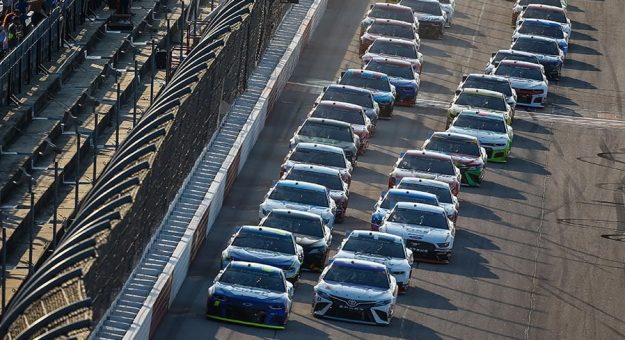NASCAR didn’t tweak its schedule; it blew it up and started over.
Gone are some of the standard NASCAR Cup Series venues, replaced by both new venues and historic time-tested tracks.
Chicagoland Speedway, which had hosted events since 2001, and Kentucky Speedway, which ran its first Cup Series event in 2011, are not on the schedule.
The two-mile Auto Club Speedway in Fontana, Calif., which 25 years ago was the newest showplace of racing, is being converted to a half-mile track and does not appear on the calendar this year because of the pandemic.
One of the two NASCAR Cup Series races at Bristol (Tenn.) Motor Speedway will be on dirt as officials will cover the .533-mile concrete oval with clay to produce more than a month of dirt-track racing, including the NASCAR Cup Series.
Over the past five or six years, there has been a growing movement in support of having more road course races on the schedule. NASCAR responded by adding Cup Series events at Road America on July 4, the Daytona Int’l Speedway road course, Circuit of The Americas and the Indianapolis Motor Speedway road course.
Seven of the 36 Cup Series events will be run on road courses this year.
In addition to COTA, Nashville Superspeedway is new to the Cup Series schedule.
The schedule also goes back in time in a sense as Atlanta Motor Speedway and Darlington (S.C.) Raceway, which had each hosted only one event in recent years, will again have a pair of Cup Series races.
Michigan Int’l Speedway will host only one Cup Series weekend and Texas Motor Speedway will have only one points race, but will present the NASCAR All-Star Race.
It’s NASCAR heading in an entirely different direction, hopeful it can return to a semblance of the popularity it enjoyed during the 1990s and early 2000s.
Some NASCAR executives called it “the biggest schedule announcement in 50 years.”
“We said back early in 2019 that we wanted to evolve the schedule,” NASCAR President Steve O’Donnell said. “We believed 2020 was going to be a year where we could make some moves within the portfolio of races we had. Really 2021 and beyond, you’re going to see some really bold changes from NASCAR.
“We believe we’ve delivered on that. We’re excited for our fans. It’s a historic schedule. All of that couldn’t have happened, however, without the cooperation of the entire industry.”
Last year’s return to racing following the shutdown because of the COVID-19 pandemic allowed the sanctioning body a trial run at some changes that could be weaved into the schedule over time, including doubleheaders and midweek races.
“Even if you throw COVID in there, I think it probably helped spur some decisions, it helped spur some of the changes that you’ve seen in the schedule in a good way,” O’Donnell said. “We were really able to pivot and do some really neat things for the industry. We had a lot of cooperation from our broadcast partners, our track operators, certainly our race teams, as we looked ahead for 2021.
“The primary goal for us was to continue to evolve the schedule, to continue to build it, to continue to listen to the fans. In 2021 we believe it’s a really bold step in that direction, but we’re not done. There’s 2022 and beyond where we’ll continue to look at making changes that we believe are in the best interest of the sport in key markets and key iconic race tracks as well. We’re going to continue the journey.”
NASCAR officials realize that loyal fans remain in the markets without races on this year’s schedule.
“It’s certainly unfortunate that sometimes you have to move races out of markets to be able to do those things,” O’Donnell said. “We still have loyal race fans in those markets. We tried to keep in proximity with new races and new events that fans could go to. For us, we believe it’s exciting.
“We wanted to be bold — we had a really solid year last year — to continue building on that momentum.”
Click below to continue reading.
